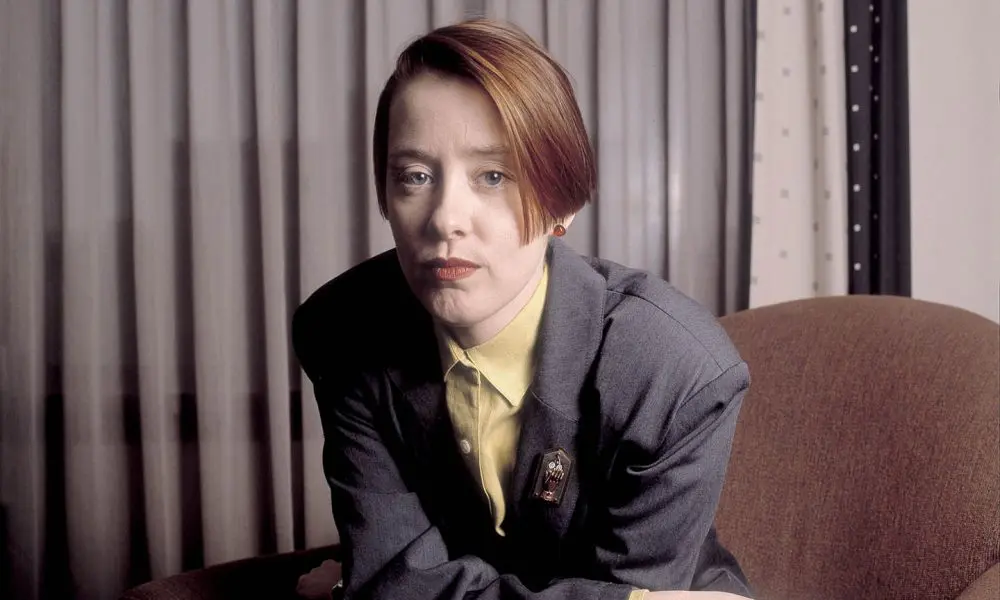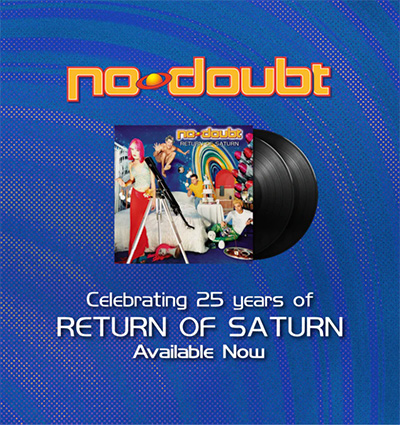How Suzanne Vega Rebooted The Singer/Songwriter For The 80s
Suzanne Vega’s first two albums pointed to a new path for acoustic guitar-slinging storytellers.

When Suzanne Vega burst from the Greenwich Village folk underground in the 1980s, no one was quite sure whether she would break through to the mainstream. But the one-two punch of Suzanne Vega and Solitude Standing pointed to a new path for acoustic guitar-slinging storytellers and flung open the floodgates for multiple waves of singer/songwriters. “It was really magical,” muses C.P. Roth, keyboardist on Vega’s self-titled 1985 debut album. “You couldn’t have imagined somebody redesigning folk music in the form of these songs and with that voice.”
Raised in upper Manhattan, Vega eventually made her way to the downtown singer/songwriter scene with an armful of quietly cagey tunes. Unusually for an unplugged troubadour at the time, she worshipped at the altar of Lou Reed. The influence is plainest in the poetic sprechgesang of her 1985 album’s opener, “Cracking,” where her cool delivery and precise picking put across an impressionistic inner monologue amid spare-but-sparkling production from her manager Steve Addabbo and Patti Smith’s right-hand man, Lenny Kaye, possibly drafted to emphasize Vega’s connection to the Smith/Reed NYC street-poet world. (Kaye brought Roth and bassist Paul Dugan along from his own band, The Lenny Kaye Connection. Drummer Sue Evans and guitarist Jon Gordon were added to the core group and sessions began in late 1984.)
Suzanne Vega’s debut album
The minimalist tension and open-concept poetics on tracks like “Small Blue Thing” and “Straight Lines” inspire fantasies of what might happen if Ann Beattie and John Ashbery became a songwriting team, and the arrangements follow suit. “Everything was gonna be naked,” says Roth, “there wasn’t gonna be some big pop wall of ho-ho.”
The uncluttered production gave Vega’s unique guitar/vocal dynamic vital breathing room. “She was such a fan of Astrud Gilberto,” says Roth, “[which] is obvious from her singing. Her guitar sort of has a little of that Latin fingerpicked influence. She’s constantly giving her voice room to speak with the way she plays guitar.” The musicians duly took their cues: “If you’re hearing that, she’s also informing you, ‘Hey, I’m just one person, and I’m already getting out of my own way.’”
Accordingly, Gordon’s guitar lines were not just painterly but pointillistic. “There wasn’t any room for a guy to bring in a guitar and just go blanga blanga blanga,” says Roth. “If he was doing chords, they were a lot more sting-like than just strumming away on something. Pop music gave you tasks; Suzanne’s music gave you a canvas, to shade in parts of what she was doing and help bring out what she was trying to convey.”
Listen to Suzanne Vega’s debut album on Apple Music or Spotify.
Up until that time, most singer/songwriter records featured either a band vibing along in what was meant to feel like a casual jam session, or a boatload of session players layering their parts into a big sonic lasagna. The artful, spartan precision of this production was as unprecedented in the format as Vega’s songs and style.
Digital synth technology was brand new and equally uncommon in an acoustic guitar-based setting. Roth’s warm, organic tones on tracks like “Cracking,” “Straight Lines,” and “Small Blue Thing” intertwined with Vega’s supple picking to forge a fresh paradigm. “I’ve always been a huge fan of Todd Rundgren,” explains Roth, “I’d seen how he used synthesizers, especially on his more downtempo songs. I was very influenced by that approach. The first album that Stevie Wonder played everything on, Music of My Mind, that was one record I was really thinking a lot about, and also the work of Isao Tomita, who was sort of like a Japanese version of Wendy Carlos, remaking classical pieces with synthesizers.”
Even “Marlene on the Wall,” the closest thing to a conventional all-in folk-rock arrangement, was like little that preceded it, touching on physical abuse (a topic soon to figure heavily in Vega’s lyrics) and making a first-person assessment of romantic ruin from an almost journalistic distance. It became Vega’s first single, as A&M Records crossed its collective fingers hoping the album’s originality would ingratiate rather than alienate.
Fortunately, college radio was coming into its own as a major industry force. “They just banged ‘Marlene on the Wall’ and Suzanne was off to the races,” remembers Roth. Solid play on MTV and the spanking-new VH1 didn’t hurt either.
The album even got some high-powered help from an unlikely ally. “Howard Stern was such a champion of Suzanne’s,” recalls Roth. “He just loved ‘Cracking,’ and he played that record a lot, on a show that didn’t play music, and said, ‘People should really pay attention to her, this is amazing.’ I don’t remember him doing that with any other artist ever.”
The album didn’t do much chart business, but it sold well and earned tons of attention, informing the wider world that there was a cool, new way to be an acoustic balladeer, and that America’s line of innovative, idiosyncratic singer/songwriters didn’t dead-end after Rickie Lee Jones. Vega’s impact would still be hailed today even if she never made a second album – but she did.
Suzanne Vega’s Solitude Standing
“She was able to avoid the sophomore jinx because she held her powder,” says Roth. Two years after her debut, Vega followed her potent first punch with the haymaker Solitude Standing.
Hewing to the if-it-ain’t-broke school of record-making, Addabbo and Kaye were brought back to produce Vega’s follow-up. But especially now that she was a touring artist, Vega needed a self-contained band instead of a cherry-picked crop of session players. That band included guitarist Marc Schulman, drummer Stephen Ferrera, keyboardist Anton Sanko, and bassist Michael Visceglia.
“When it came time to do the second record,” remembers Visceglia, who remains Vega’s stalwart accompanist to this day, “the budget was increased dramatically. We recorded it up in Bearsville Studio, we all went up to Woodstock and hunkered down for a few weeks and recorded basic tracks up there.”
Where the first album is airy, impressionistic, and quiet, Solitude Standing is a dark, roiling beast that matches Vega’s heady visions with big, visceral grooves. The band members’ co-writing credit on several cuts speaks to Solitude’s collective approach. “Suzanne would come in with main parts of the song,” explains Visceglia, “but on a few tracks it seemed like it needed some connective tissue – a bridge here, an introduction there, so that’s where we all came in. By that time, we were really forming the identity of being a band.”
Consequently, the musicians’ influences had a hefty impact on the results. “At the time I was very enamored of some of the Peter Gabriel records,” says Visceglia, “we were all listening to the Security record. We loved the atmosphere and the power of the rhythm section – I think we were trying to cop a little of that vibe. But we were also interested in bands like XTC, [so] especially for any of the rockers, we were trying to bring some of that sensibility in…and I remember our keyboard player, Anton, was really into the band Japan.”
There’s a distinct link between the spooky mood and sinuous rhythms of Gabriel tunes like “The Rhythm of the Heat” and Solitude track “Wooden Horse (Caspar Hauser’s Song),” a simmering, ominous tune about the mysterious young 19th century German allegedly raised in total isolation before entering the outside world. The exotic, percussive synths of Japan’s Richard Barbieri are echoed in Sanko’s lines on the pulsing street-violence tableau “In the Eye,” and the eerily throbbing ghost story of the title track. The aforementioned XTC influence appears most strongly in the song that would soon change Vega’s life and alter the course of the music business.
“Luka” is the album’s poppiest, most upbeat-sounding track, but on an album full of foreboding material, it’s also the darkest. Displacing Vega’s usual poetic imagery, it’s a deceptively prosaic-sounding first-person account from a young boy who reveals himself to be a victim of abuse mostly by what he doesn’t say. It’s a songwriting masterstroke that also managed to be the hookiest thing she’d ever come up with. It was destined to become a full-blown phenomenon.
“When we did ‘Luka,’ we all knew that was a hit,” recalls Visceglia. “It’s not an uplifting lyric but we kind of treated it like a pop song.” Sure enough, as the album’s first single, it went to No. 3, and earned three Grammy nominations. Among its millions of fans, one of the most high-profile was Prince, reportedly an abuse victim himself.
“He wrote a couple of letters to Suzanne and loved the song very much,” reveals Visceglia. “When we went to Minneapolis and played the Orpheum Theatre, we got a message that Prince was gonna come to the show. Right before we played ‘Luka,’ right at the side of the stage, we saw this vision in all yellow, hat to shoes. As soon as we finished playing ‘Luka’ he stood up and applauded and then he left. He came to see that one song. But he knew exactly when we were gonna play it!”
Solitude Standing became a multi-platinum smash embraced around the globe. Vega and company toured doggedly, as the venues and the buzz kept getting bigger. “We knew we had a good record,” allows Visceglia, “but we didn’t know it was gonna make that kind of worldwide impact. We were kind of living like rock stars for a while. We played Saturday Night Live; we did a bunch of TV shows all over the world.”
Vega and the band weren’t the only ones whose lives were changed by the success. “The industry realized that the observational or confessional singer/songwriter that hadn’t really been around since Joni Mitchell and maybe Carole King and Carly Simon, Rickie Lee Jones, I think they realized there could be a lot of commercial success in that world,” says Visceglia.
It was surely no coincidence that Tracy Chapman, Melissa Etheridge, Sarah McLachlan, Edie Brickell, and Vega’s sometime backup singer Shawn Colvin, to name only a few, all released their debut albums between 1988 and 1989, and new artists like Sinead O’Connor and Indigo Girls had their big breakthrough in the same period.
Listen to Suzanne Vega’s Solitude Standing on Apple Music or Spotify.
“These wonderful women came out swinging,” says Visceglia, “and they made a lot of beautiful music. And that culminated I think with the Lilith Fair tours that happened in the ‘90s, where it was a celebration of women performers of all genres that Sarah McLachlan put together.” Vega had a place of prominence on each of those tours, making her role as a catalyst clear. “I think a lot of those women would be very upfront about that,” says Visceglia of Vega’s influence. “That was a landmark record in the ‘80s…it influenced a whole generation of female singer/songwriters.”
It wasn’t only women who were affected by Vega’s ‘80s albums though. How far would the mix of arty alternative rock and acoustic reflection represented by artists like Michael Penn or Crash Test Dummies have gotten otherwise? How about Luka Bloom, whose stage name was sourced from the work of Vega and James Joyce?
“It was so different from what was happening at the time,” says Visceglia of Vega’s initial salvo. And that difference changed a lot of lives.
Looking for more? Discover the best female songwriters ever.














